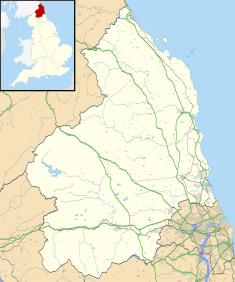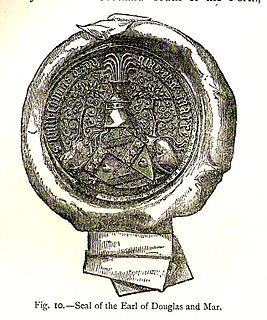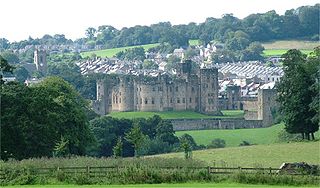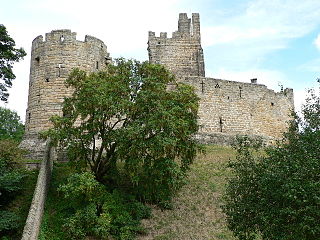| Percy Cross | |
|---|---|
 Percy's Cross, northwest of Otterburn | |
| Location | Northumberland, England, UK |
| Coordinates | 55°14′13″N2°11′41″W / 55.2370°N 2.1947°W Coordinates: 55°14′13″N2°11′41″W / 55.2370°N 2.1947°W |
| OS grid reference | NY8771793664 |
Location in Northumberland | |
The Percy Cross (also Battle Stone) is located just off the A696, 1 kilometre (0.62 mi) from Otterburn, Northumberland, England. It was erected before 1400 to commemorate the Battle of Otterburn, which took place in 1388, and takes its name from Henry Percy, 1st Earl of Northumberland whose two sons took part in the battle. The memorial was restored and re-erected in 1777, and again in modern day, to include signage. [1] The Percy Cross is a sandstone memorial which includes a square stepped base, approximately 1 metre (3 ft 3 in) in height and 2 metres (6 ft 7 in) in diameter. [2]

Otterburn is a small village in Northumberland, England, 31 miles (50 km) northwest of Newcastle upon Tyne on the banks of the River Rede, near the confluence of the Otter Burn, from which the village derives its name. It lies within the Cheviot Hills about 16 miles (26 km) from the Scottish border. The parish of Otterburn is at the heart of Redesdale, a Northumbrian upland valley.
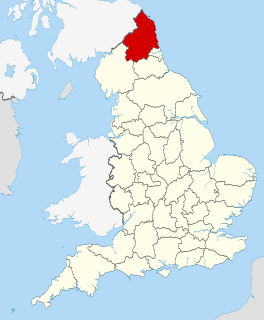
Northumberland is a county in North East England. The northernmost county of England, it borders Cumbria to the west, County Durham and Tyne and Wear to the south and the Scottish Borders to the north. To the east is the North Sea coastline with a 64 miles (103 km) path. The county town is Alnwick, although the County council is based in Morpeth.
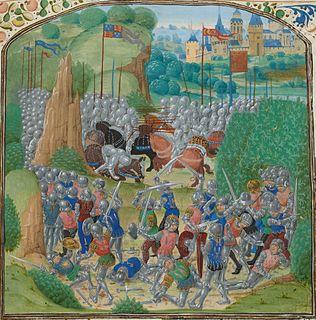
The Battle of Otterburn took place according to Scottish sources on 5 August 1388, or 19 August according to English sources, as part of the continuing border skirmishes between the Scots and English.
Contents
The entire battlefield area is designated an Area of High Landscape Value and parts of it are contained within the Northumberland National Park. On 7 January 1988, Percy Cross became a Grade II listed building. [3] [4]

Northumberland National Park is the northernmost national park in England. It covers an area of more than 1,050 square kilometres (410 sq mi) between the Scottish border in the north to just south of Hadrian's Wall, and it is one of the least populated and least visited of the National Parks. The park lies entirely within Northumberland, covering about a quarter of the county.

A listed building, or listed structure, is one that has been placed on one of the four statutory lists maintained by Historic England in England, Historic Environment Scotland in Scotland, Cadw in Wales, and the Northern Ireland Environment Agency in Northern Ireland.
